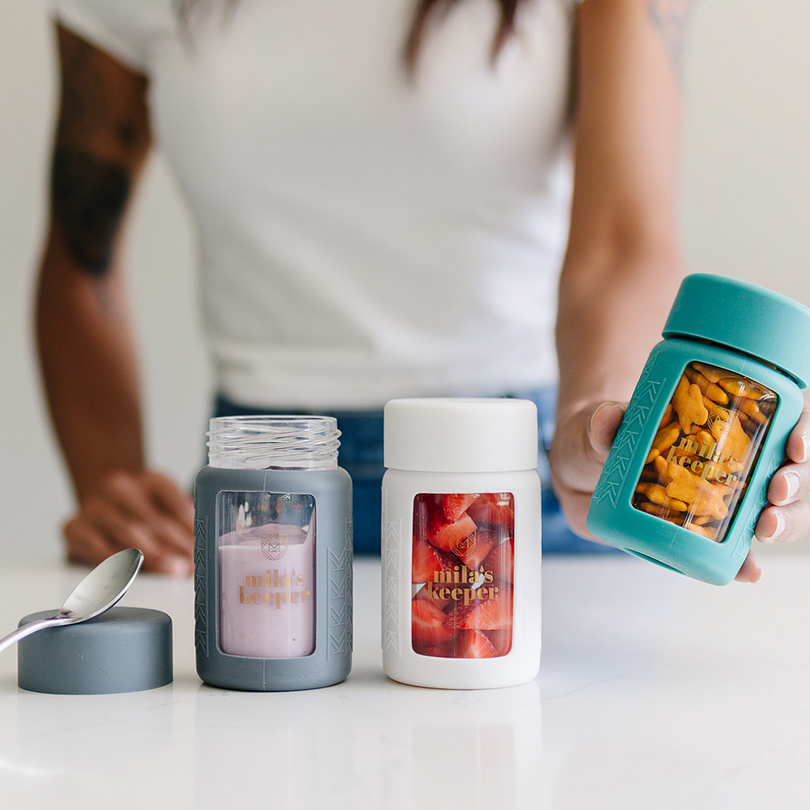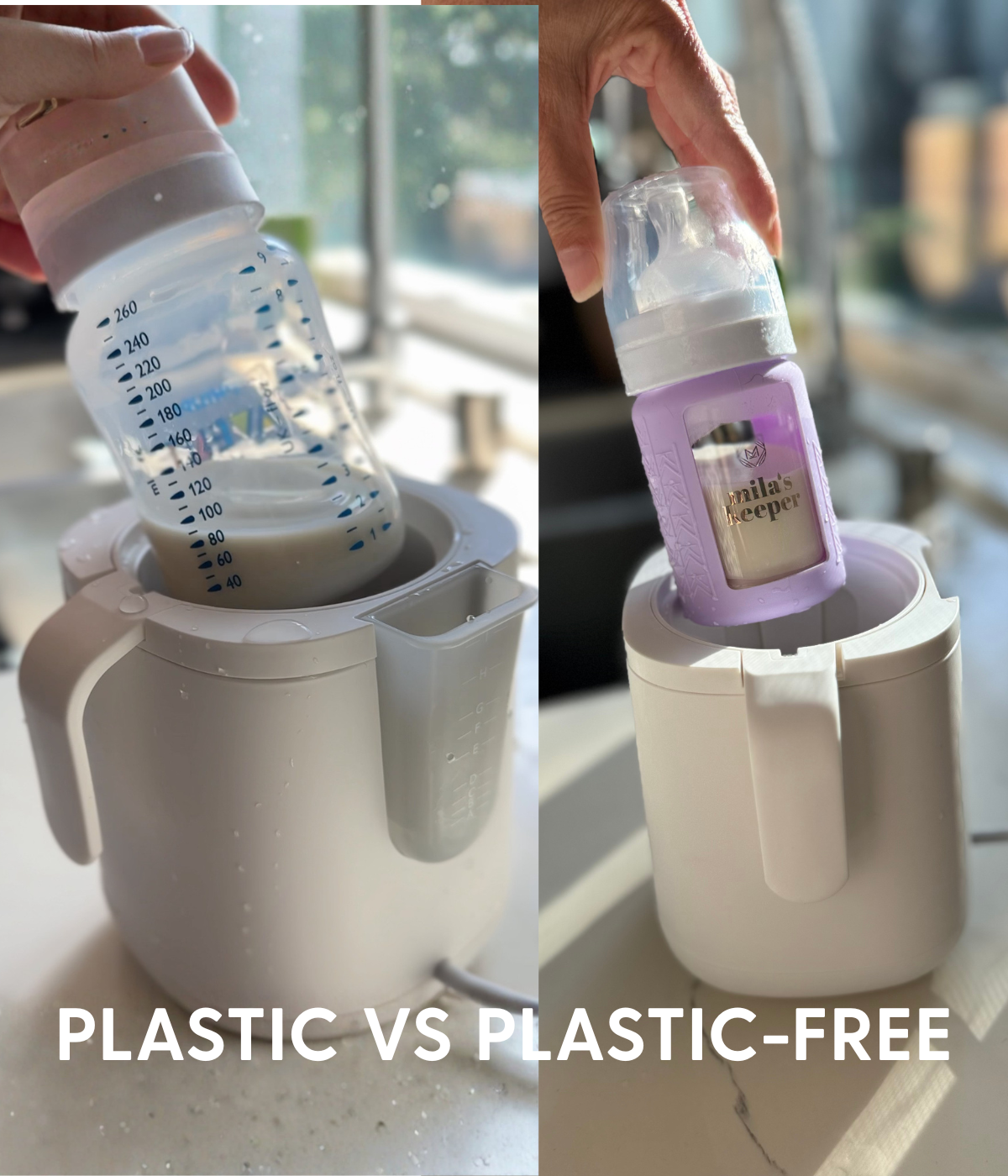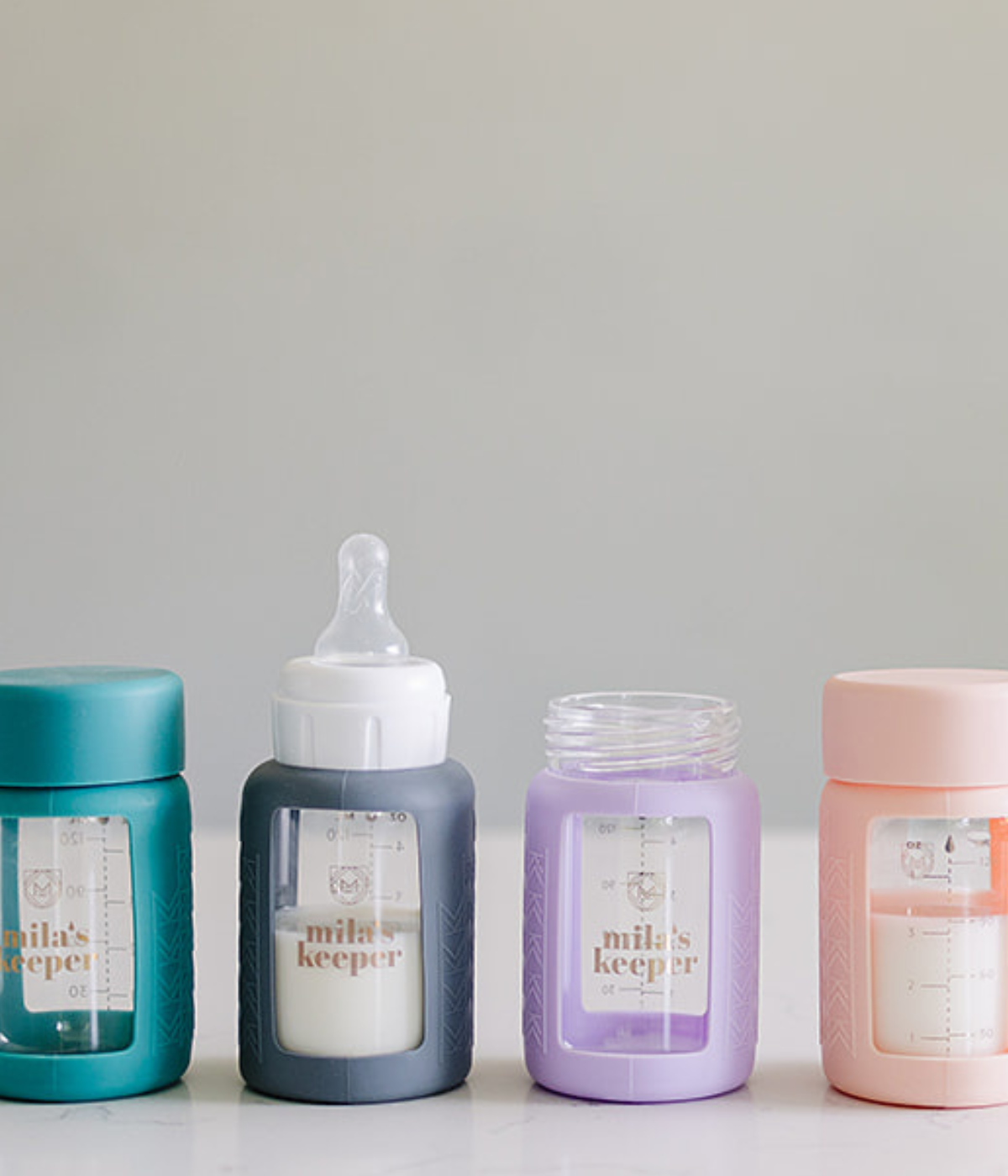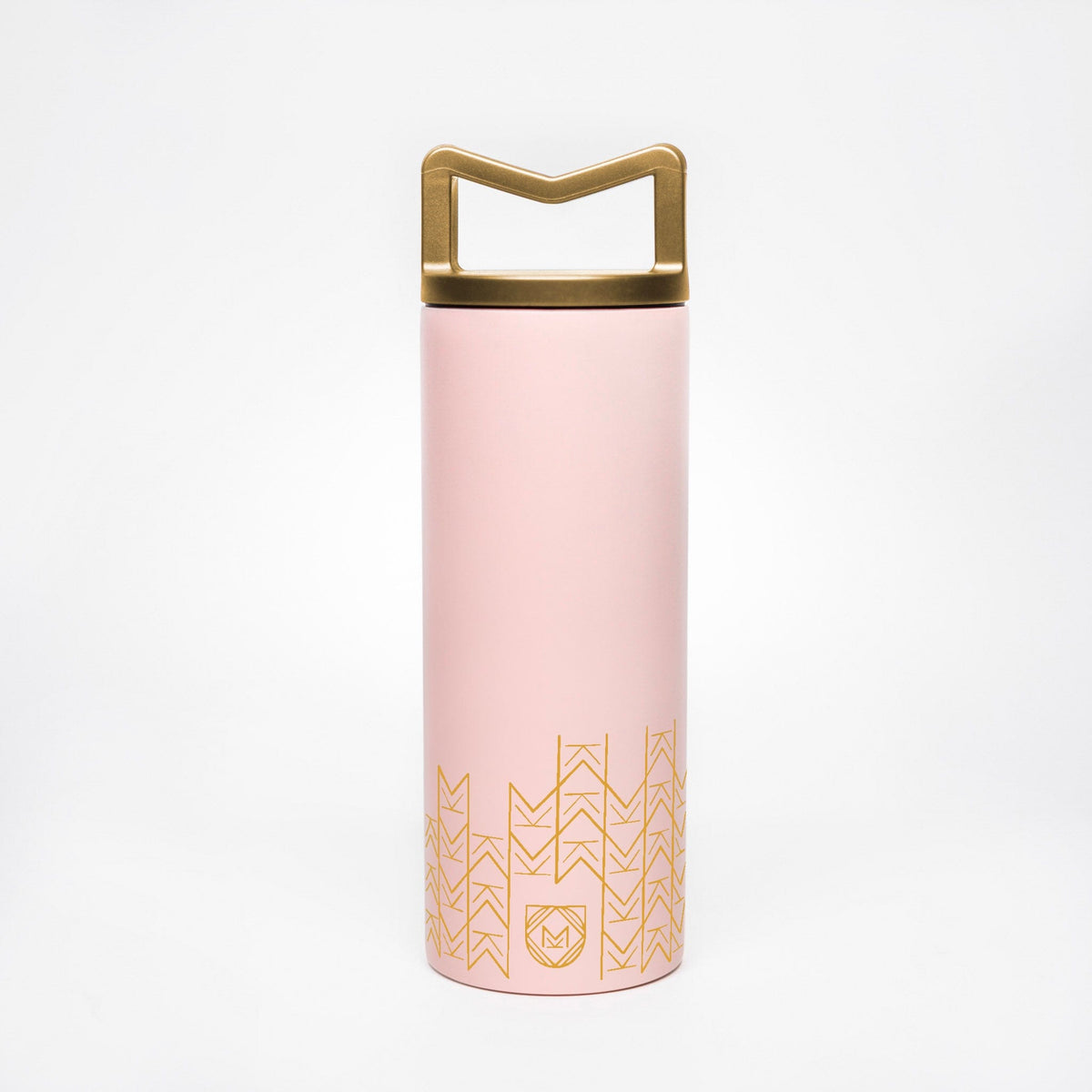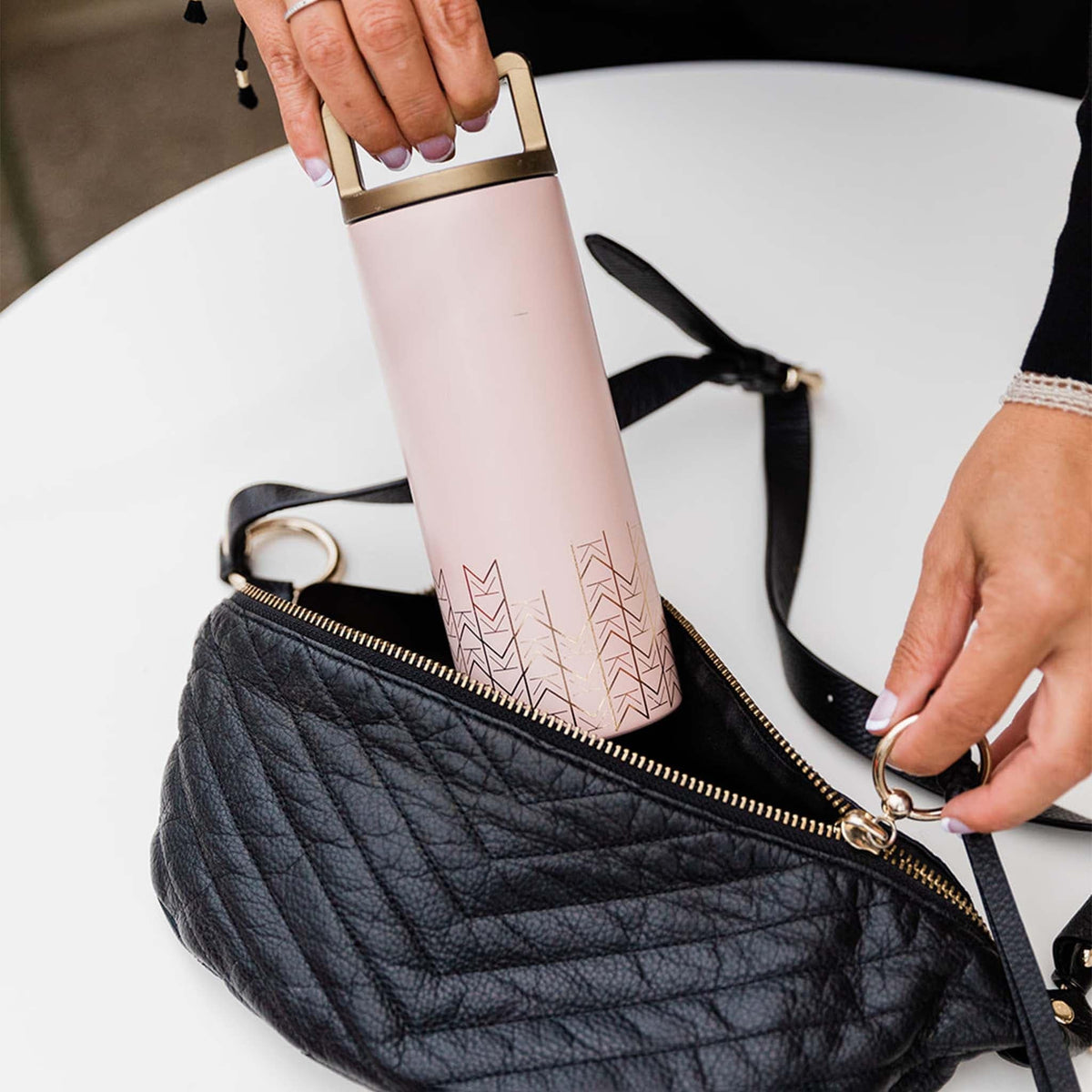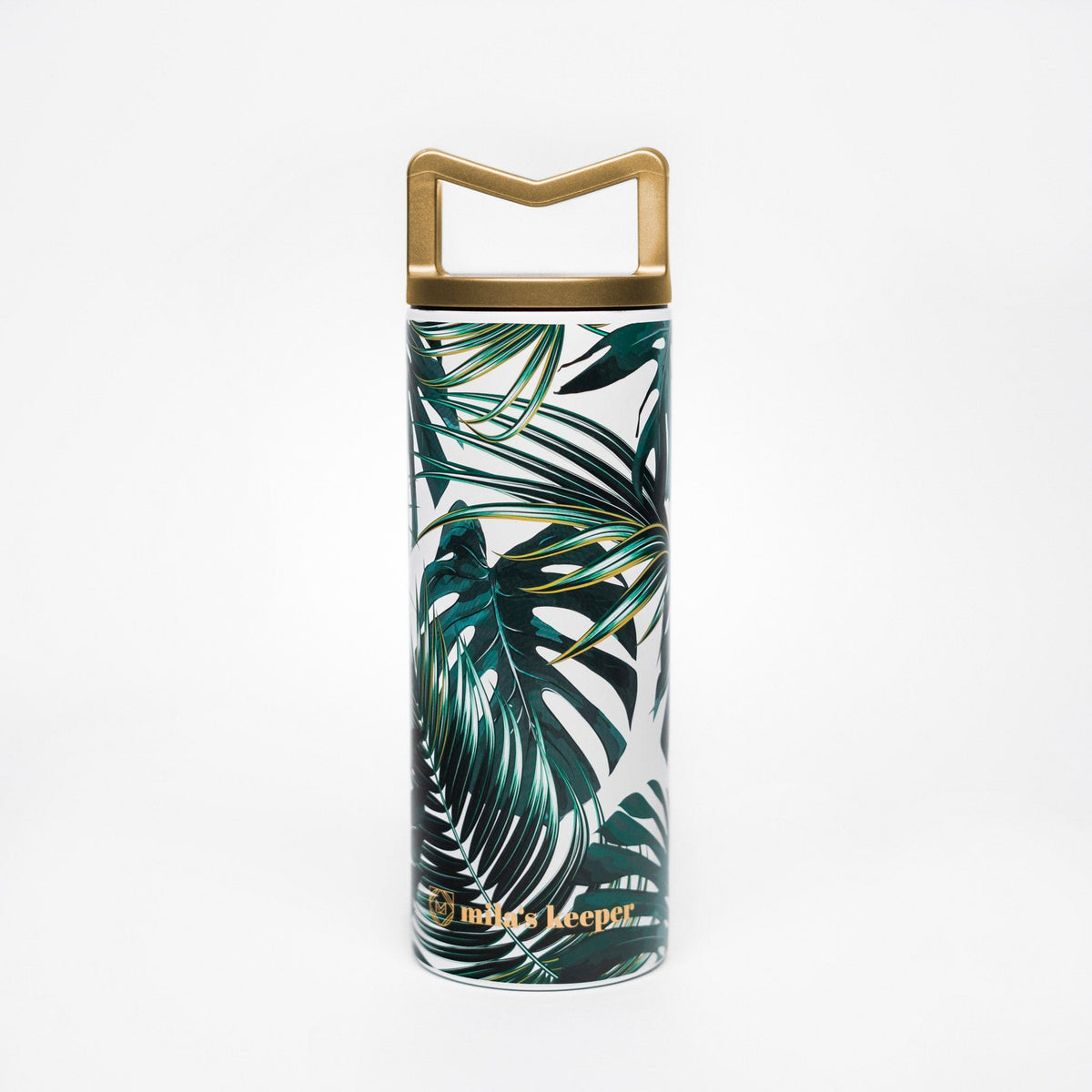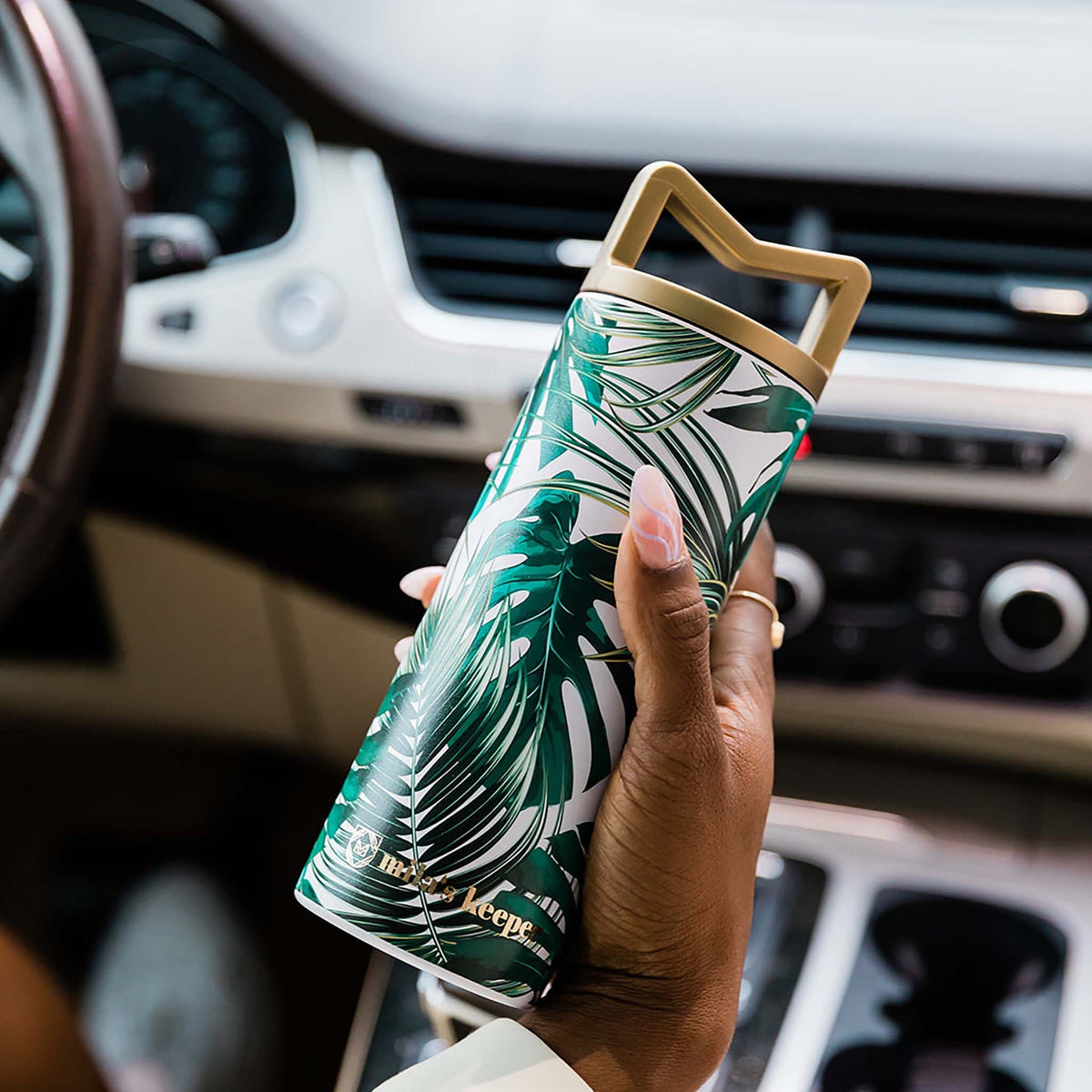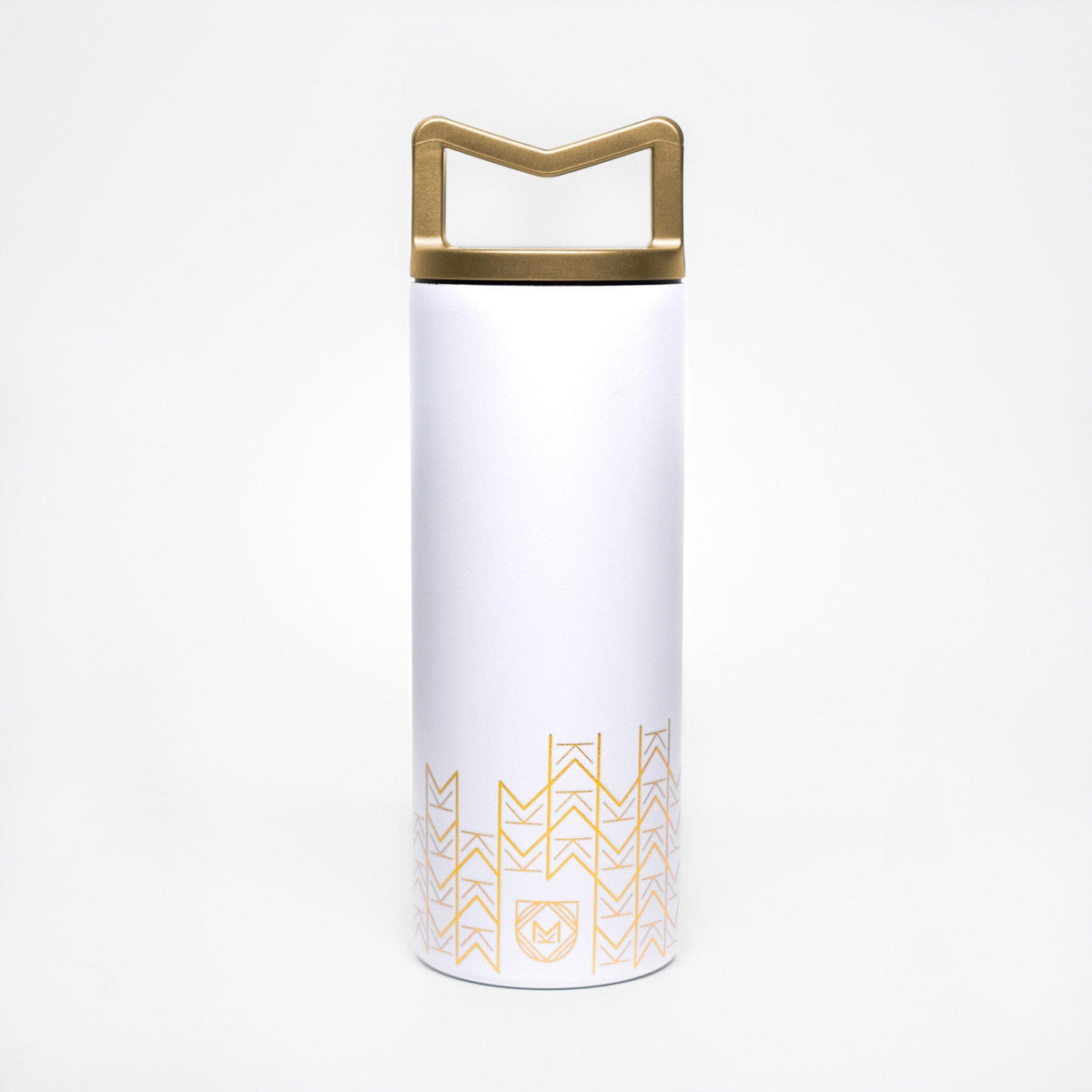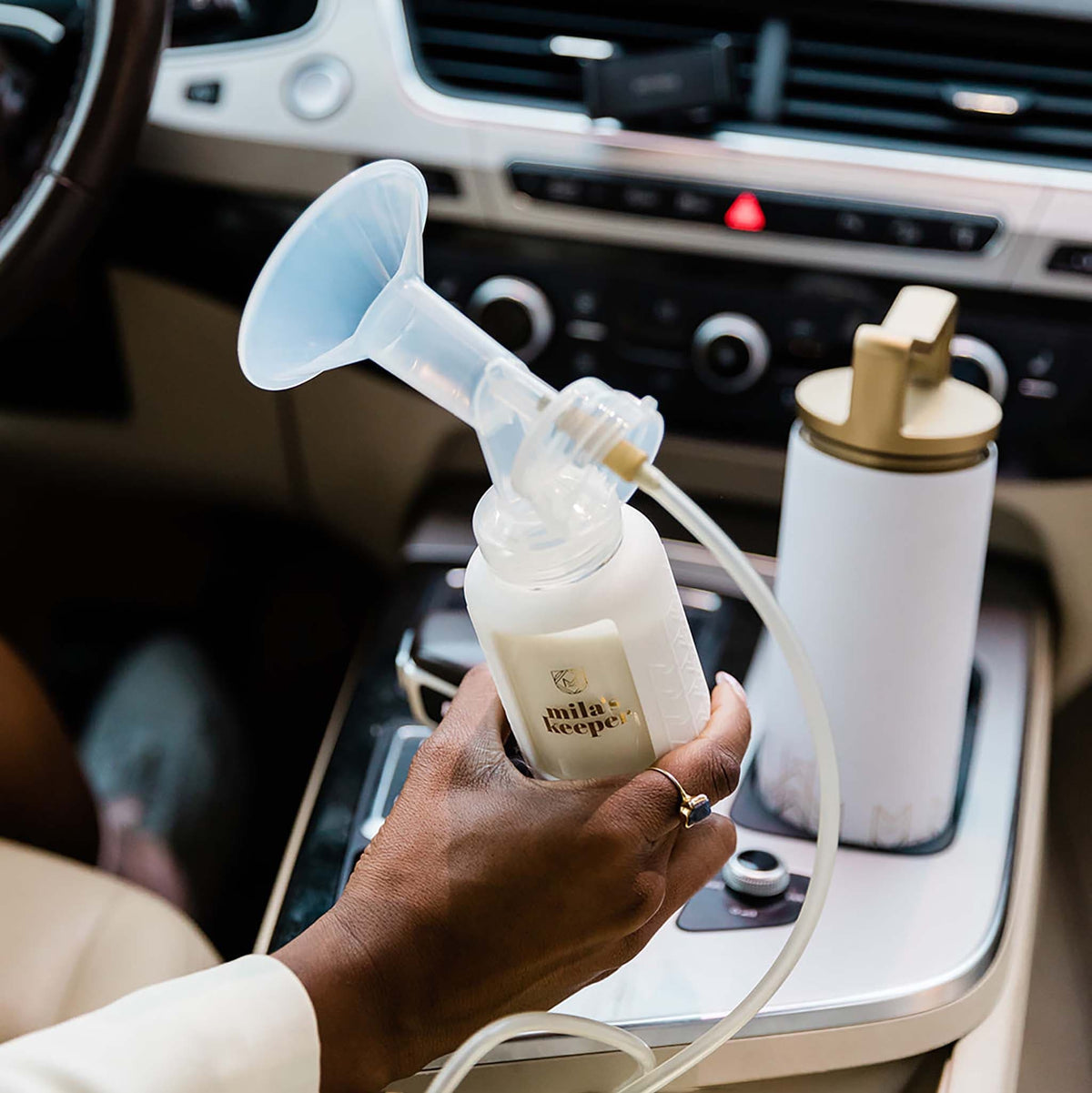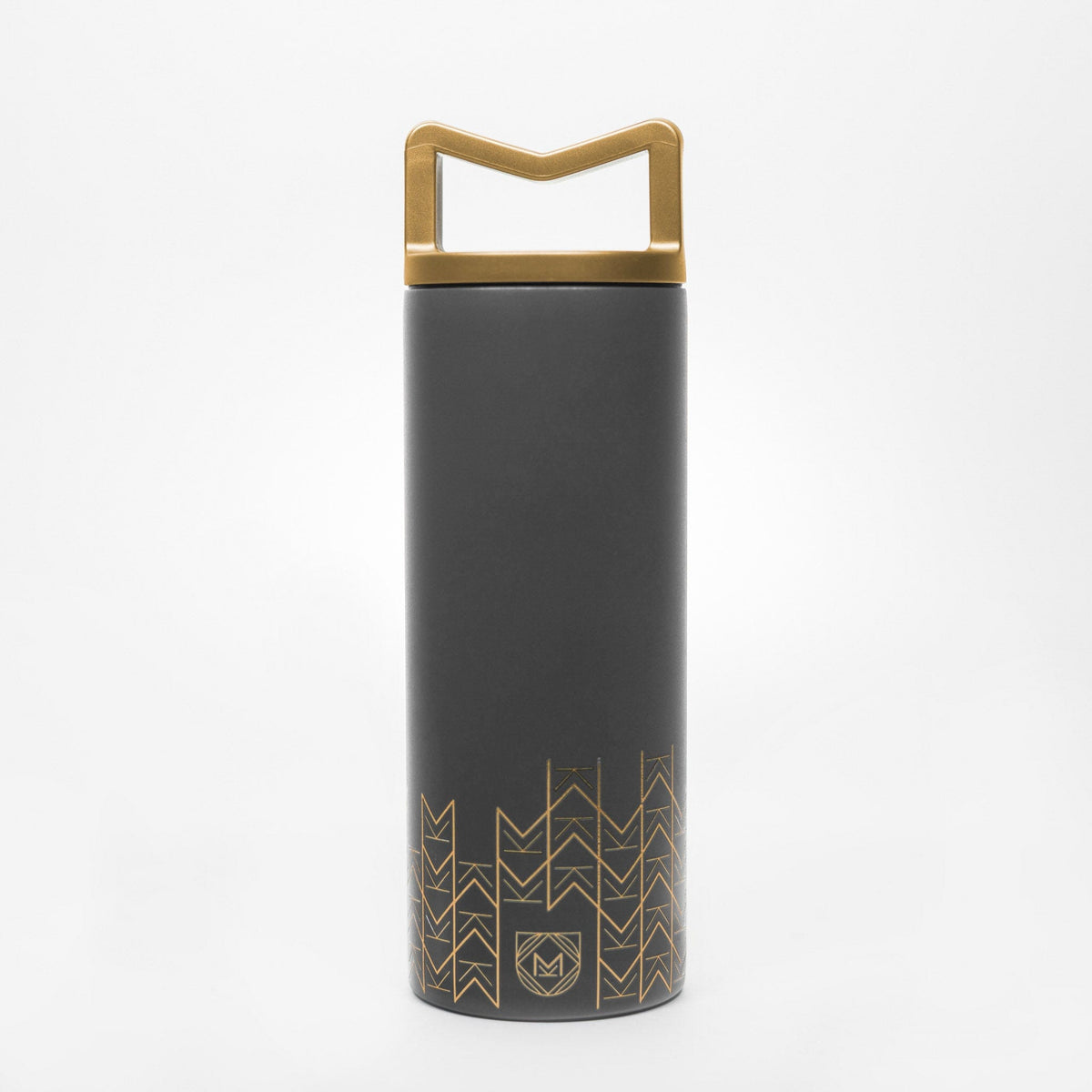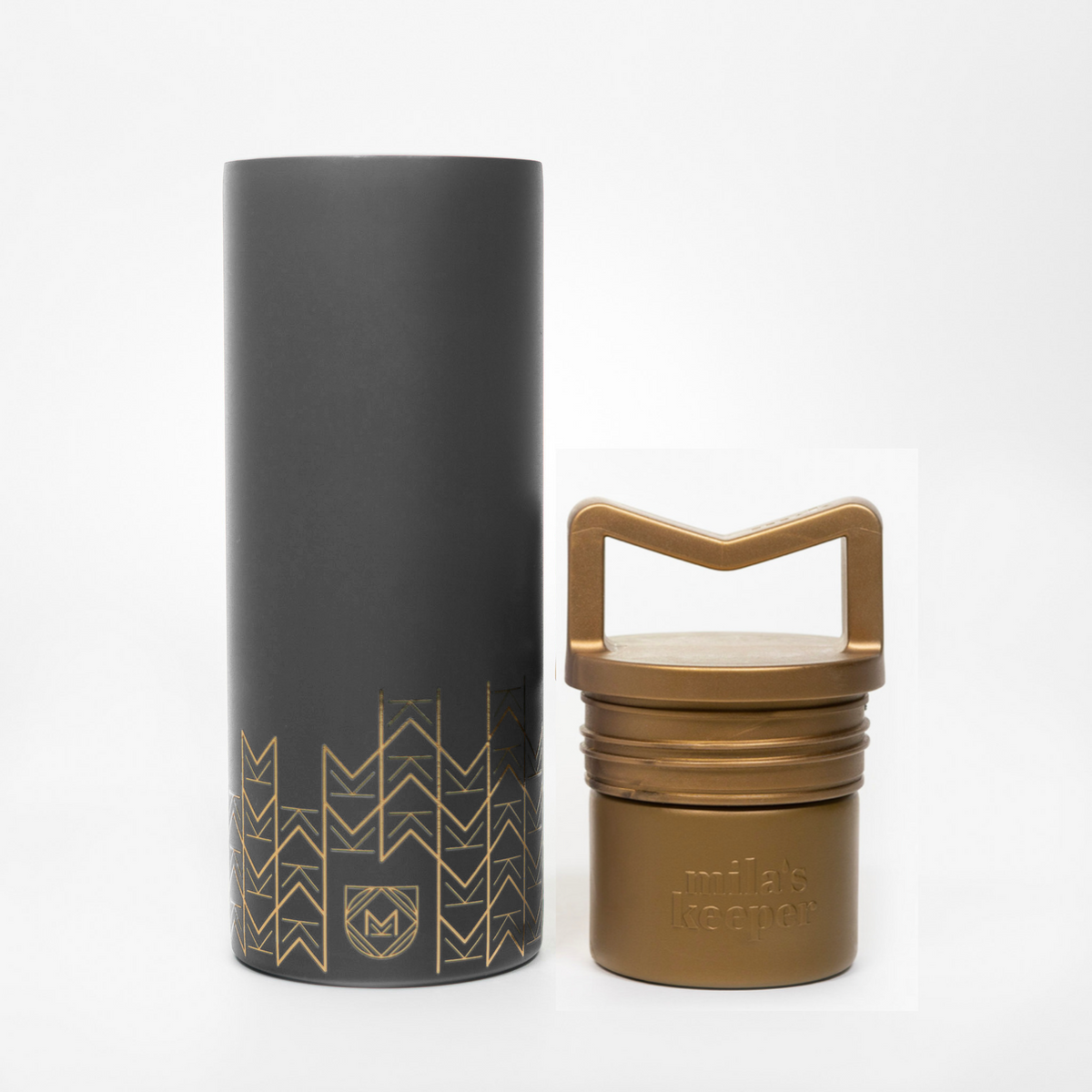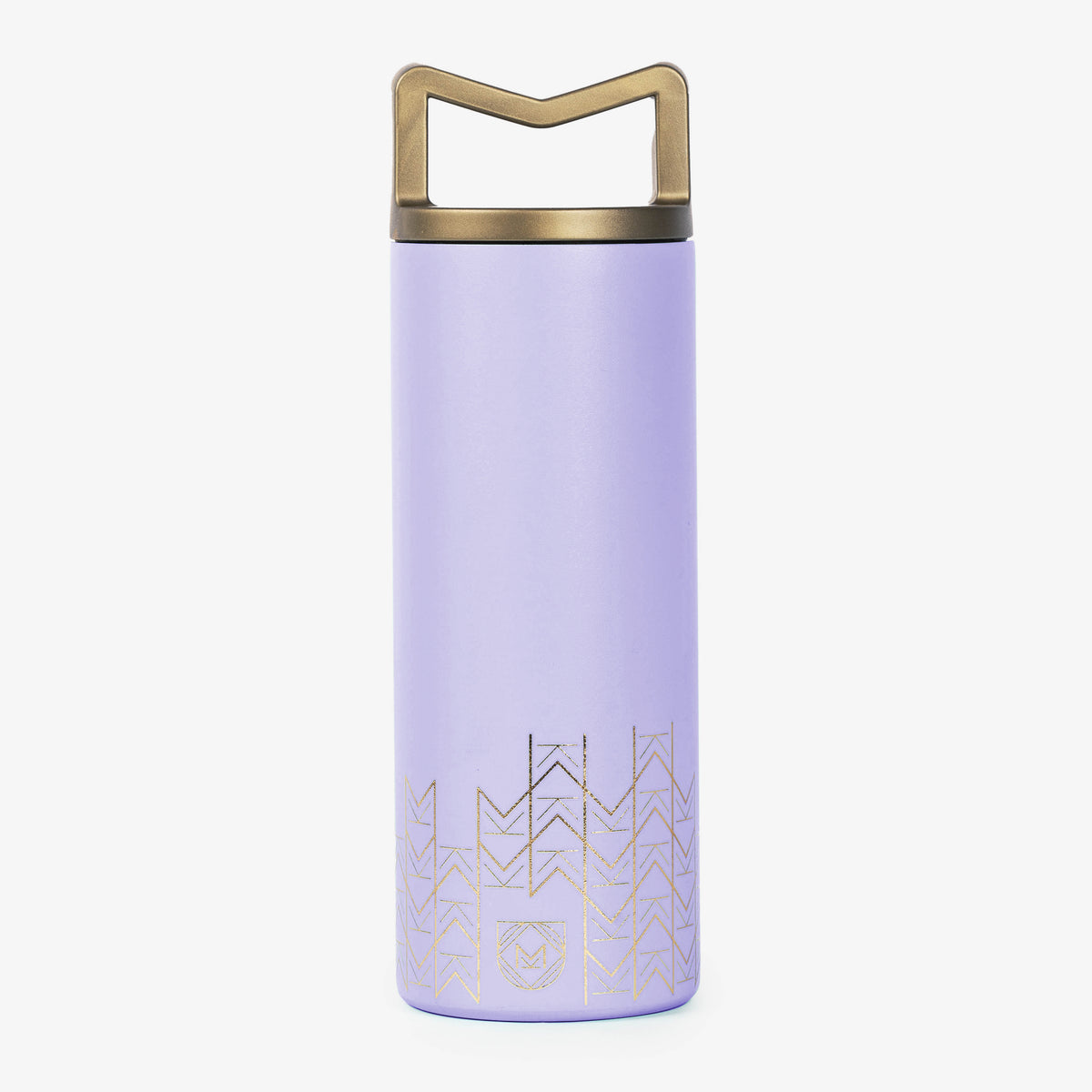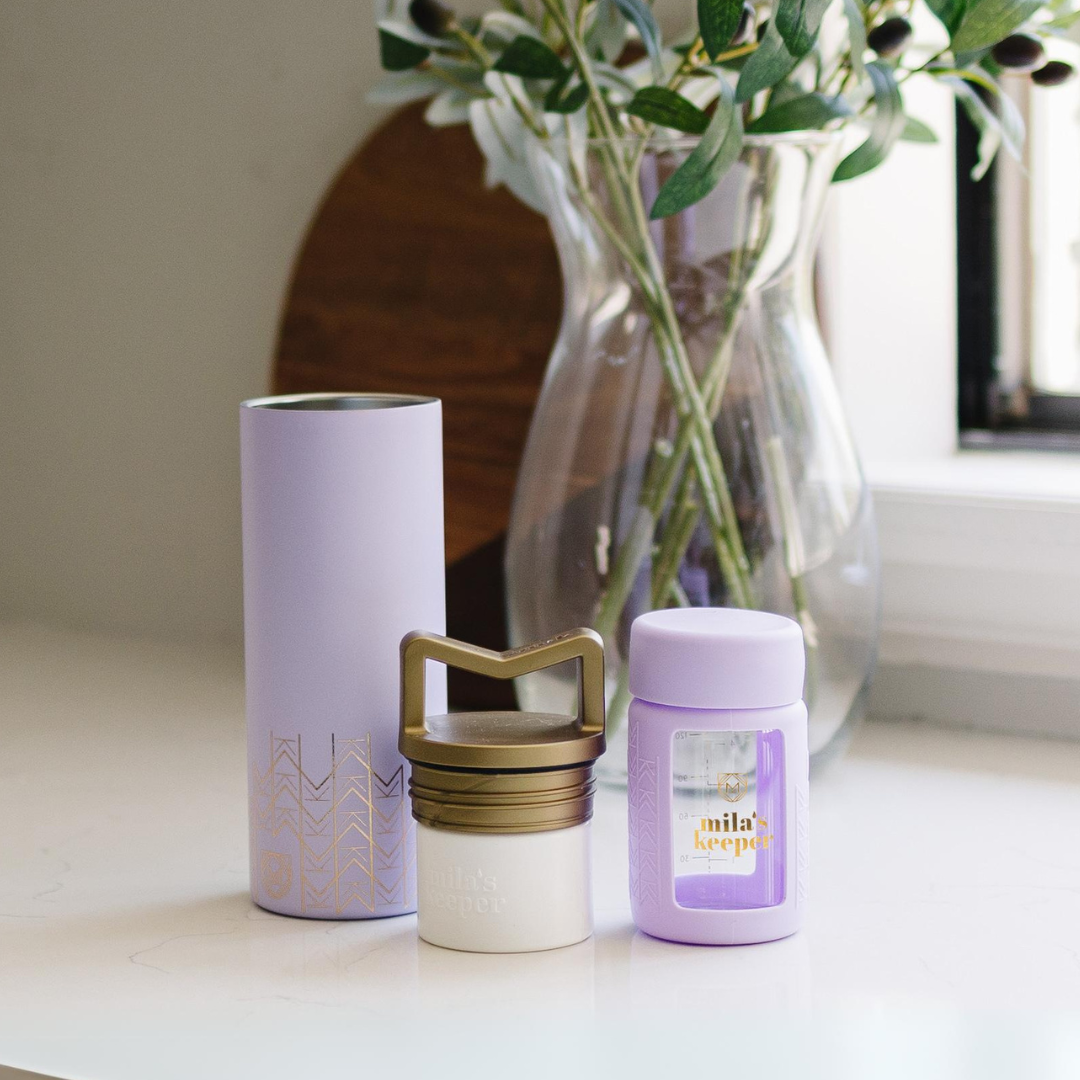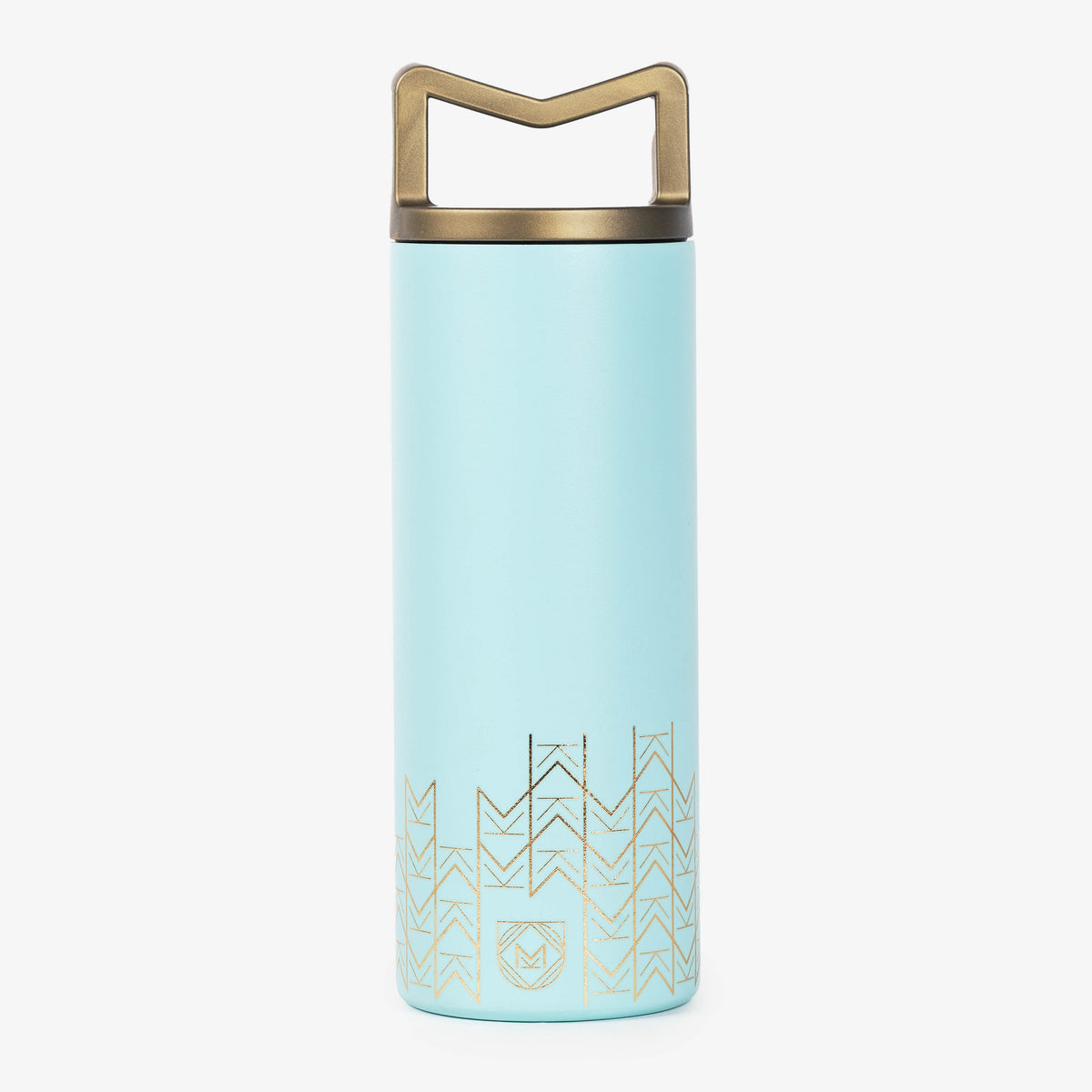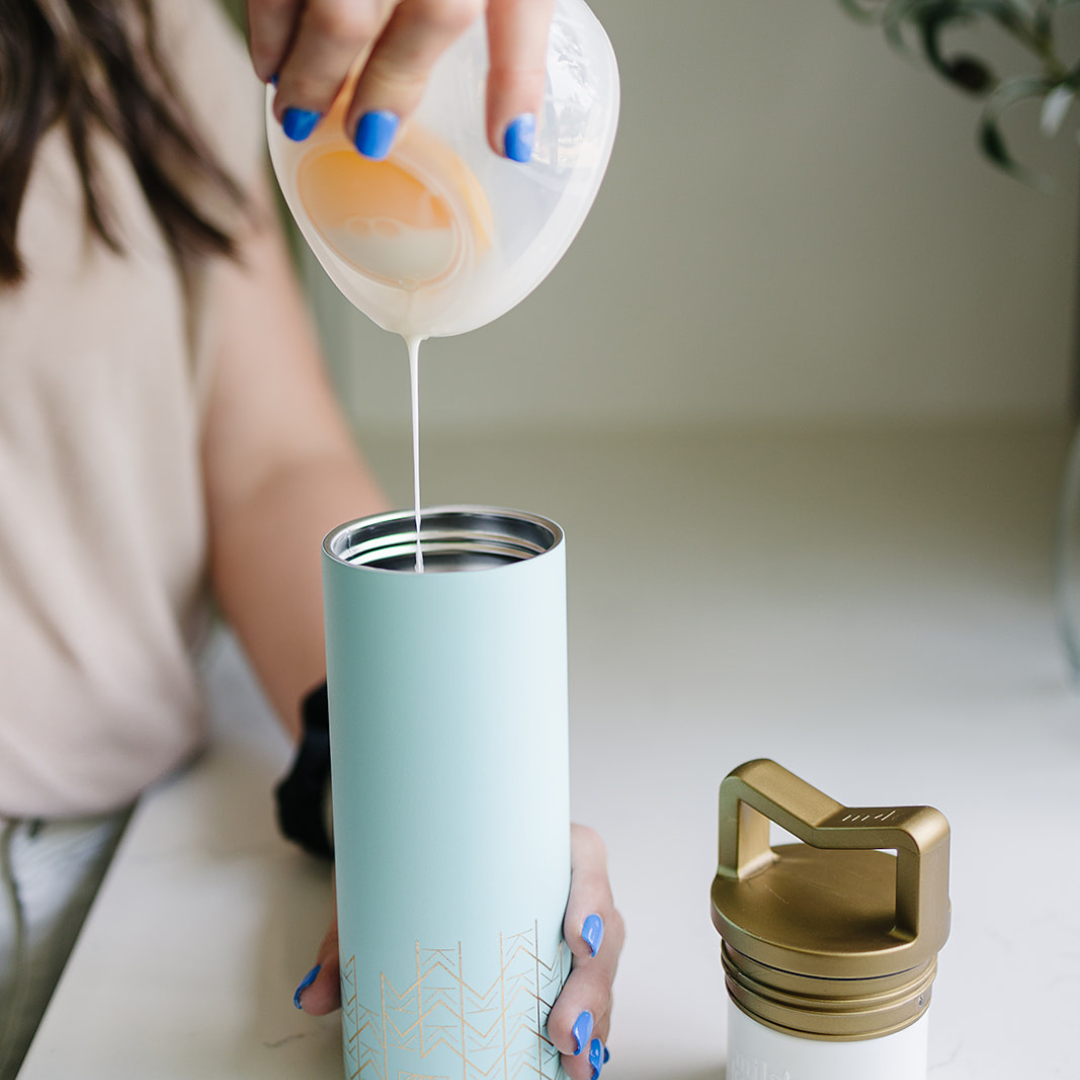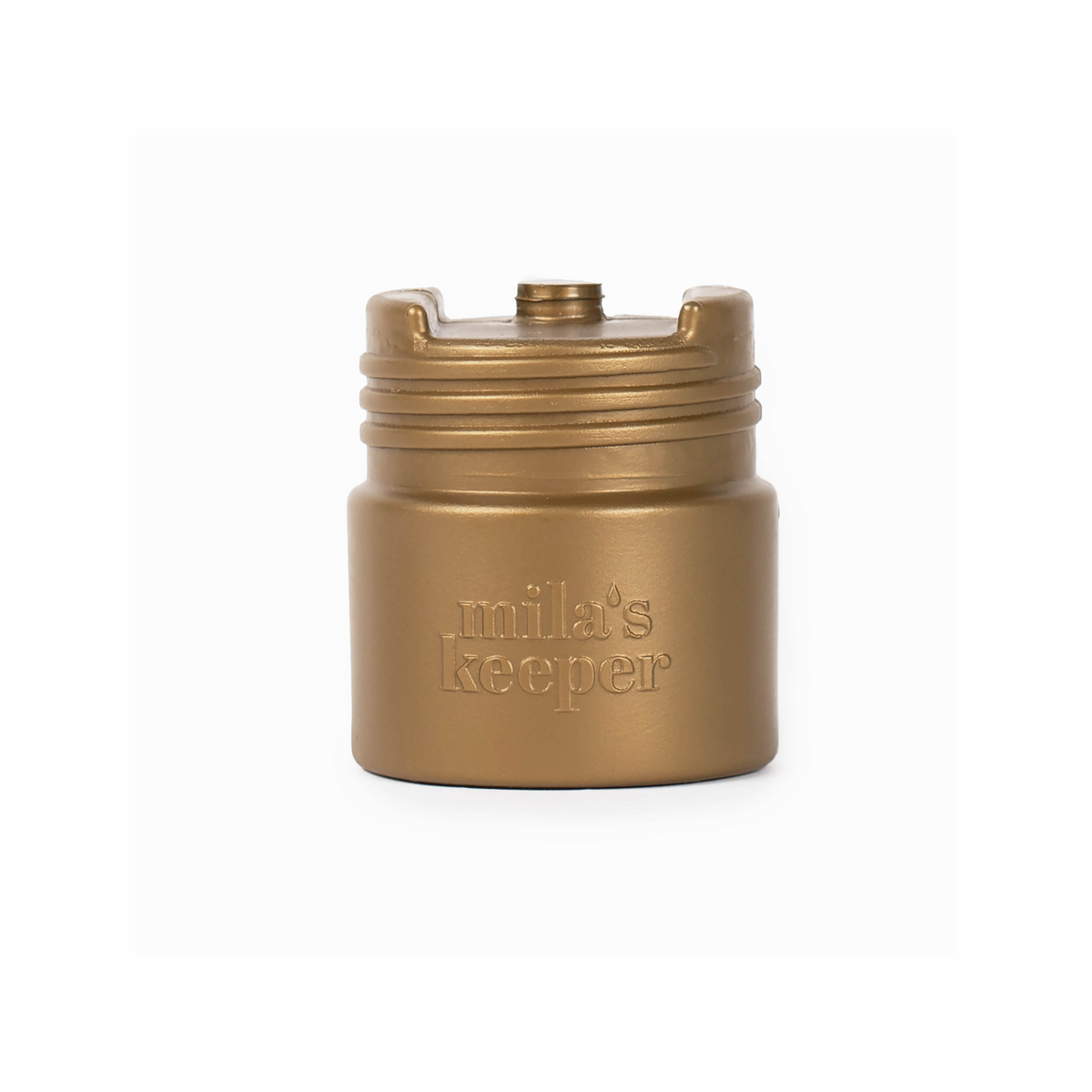What Is Metallic Tasting Breast Milk?
If you’ve ever wondered, “Why does my breast milk taste metallic?”, you’re not alone. Many breastfeeding parents notice that their expressed milk sometimes develops an unexpected metallic, soapy, or even slightly rancid taste. This can be concerning, especially if your baby reacts to the change.
Also if you are storing your milk in stainless steel such as a portable breast milk cooler, you might be thinking that the taste comes from the container, but rest assured this is not the case! High quality stainless steel like 304 is odorless and 100% leach-free.
The good news is that this is common and usually harmless. Breast milk naturally varies in taste due to factors like diet, storage, and natural enzymatic activity. According to La Leche League International (LLLI), breast milk can develop different flavors and odors depending on how it's stored and how its components interact over time.
While some babies don’t seem to notice, others might refuse milk with a metallic taste. Understanding the causes of metallic tasting breast milk can help you manage the issue, prevent unwanted taste changes, and ensure your baby continues feeding comfortably.
Common Causes of Metallic Tasting Breast Milk
If you’ve noticed breast milk taste changes, you might be wondering what’s behind them. While breast milk naturally varies in flavor, a metallic taste is often linked to specific biological and environmental factors. Here are the most common causes of metallic breast milk and what you can do about them.
1. Lipid Oxidation
One of the most well-known reasons for metallic breast milk is breast milk oxidation, a process where the fats in your milk start to break down. This can happen when lipase, an enzyme that helps digest fats, becomes overly active. While lipase isn’t harmful, it can give your milk a metallic or soapy taste over time.
According to Parents.com , some parents naturally produce high-lipase breast milk, which can cause oxidation to occur more quickly. While this doesn’t make the milk unsafe, some babies might refuse it due to the altered taste.
2. Medications or Diet
What you eat and the medications you take can also affect breast milk taste changes. Certain foods—especially those rich in iron, sulfur, or strong flavors like garlic and onions—may contribute to a metallic taste in breast milk. Some prenatal vitamins, iron supplements, and medications can also subtly alter the flavor of your milk.
If you suspect your diet or medication is causing a change, try adjusting your intake and see if your baby’s reaction improves.
3. High Iron Levels
Some parents naturally have higher iron levels in their breast milk, either due to genetics, supplements, or postpartum recovery. Excess iron can sometimes lead to a faint metallic or bloody taste. If you're taking high-dose iron supplements, you may want to discuss alternatives with your healthcare provider to see if they could be contributing to the issue.

Does Metallic Tasting Breast Milk Affect Your Baby?
If you’ve noticed a metallic taste in your breast milk, you might be wondering if it’s safe for your baby. The good news is that it’s not harmful—the nutritional value remains the same, even if the flavor is different.
That said, some babies have a strong preference for fresh milk and may react to unexpected taste changes. While many won’t mind, others might become fussy or even refuse a bottle if the flavor is noticeably different.
What If Your Baby Refuses Metallic-Tasting Milk?
If your little one seems reluctant to drink stored milk, here are some strategies that might help:
-
Blend it with freshly expressed milk – Mixing refrigerated or frozen milk with a fresh batch can help soften the taste.
-
Offer milk when your baby is especially hungry – A hungry baby is sometimes less picky.
-
Adjust the temperature – Some babies prefer warmer milk, which can make the taste more familiar.
Even if your baby is hesitant at first, metallic-tasting breast milk is still perfectly safe. If refusal becomes a pattern, there are ways to reduce the chances of taste changes happening in the first place—something we’ll explore in the next sections.
How to Prevent Metallic Tasting Breast Milk
Breast milk oxidation is one of the main reasons for taste changes, but proper storage, diet adjustments, and careful reheating can help preserve its flavor.
1. Proper Milk Storage
Freezing is the best option for keeping breast milk fresh. A PubMed study (source) found that malondialdehyde (MDA)—a marker of lipid oxidation—increased in refrigerated milk but not in frozen samples. This means that freezing helps slow down fat breakdown, reducing the risk of breast milk taste changes.
To maintain freshness:
-
Use clean, airtight containers – Exposure to air speeds up oxidation.
-
Freeze immediately if not using within 24 hours – This prevents fats from breaking down.
-
Choose glass storage bottles – Glass breast milk bottles could help minimize oxidation compared to plastic bags.
2. Managing Diet and Supplements
Certain foods and supplements can contribute to breast milk taste changes. High-iron foods, sulfur-rich vegetables, and strong flavors like garlic or onions may influence the milk’s flavor. Keeping a food journal can help identify patterns if taste changes become frequent.
Iron supplements and high-iron prenatal vitamins may also contribute to a metallic taste in breast milk. If this seems to be a factor, discussing alternative options with a healthcare provider may be helpful.
3. Avoiding Heat Exposure
Improper heating can accelerate oxidation and affect taste. To stop breast milk from tasting metallic, it’s best to:
-
Thaw milk gradually in the fridge instead of using hot water.
-
Warm milk gently—submerge in warm (not boiling) water rather than microwaving.
Following these steps can help keep breast milk tasting fresh and reduce the likelihood of taste changes that might lead to bottle refusal.

How to Fix or Mask Metallic Tasting Breast Milk
A metallic taste in breast milk can be off-putting for some babies, but there are ways to make it more palatable. Adjusting how milk is stored, served, or even mixed with other foods can help reduce noticeable flavor changes.
1. Mixing Fresh and Stored Milk
One of the simplest ways to fix metallic breast milk taste is by blending freshly expressed milk with stored milk. According to What to Expect , a 50/50 approach—mixing half stored milk with half fresh milk—can help dilute the taste, making it more acceptable to babies.
2. Serving Milk Chilled or at Room Temperature
The way milk is served can also make a difference. Some babies may tolerate metallic-tasting breast milk better when it’s chilled rather than warmed. Warming can sometimes intensify certain flavors, while cooler milk may mask them. If your baby seems hesitant with warmed milk, try offering it straight from the refrigerator or at room temperature.
3. Scalding Milk Before Storage
For those dealing with high lipase milk, scalding before storing may help. The scalding method, as recommended by What to Expect, involves:
-
Heating freshly expressed milk in a clean pan until small bubbles form at the edges (about 180°F / 82°C).
-
Immediately placing the pan in a bowl of ice water to cool it down quickly before storing.
This process deactivates lipase, the enzyme responsible for breaking down fats, which can contribute to breast milk taste changes over time. A step-by-step guide on scalding is available in this YouTube video.
4. Mixing Breast Milk with Solids
For babies who have started solids, mixing breast milk with purées can be another way to ensure they still get the nutrition from breast milk without the strong metallic taste. The American Academy of Pediatrics (AAP) recommends introducing solids around 6 months, so for older babies, blending stored milk into oatmeal, mashed fruits, or other soft foods can help mask the flavor.
5. Encouraging Continued Breastfeeding
If your baby is hesitant to drink stored milk, adjusting feeding routines might help. Strategies include:
-
Offering milk when your baby is hungrier, as they may be less picky.
-
Experimenting with different feeding positions to encourage acceptance.
-
Using a different bottle or cup if bottle refusal is an issue.
These small adjustments can help mask metallic breast milk taste and make feedings smoother.
When to See a Doctor About Metallic Tasting Breast Milk
In most cases, breast milk taste changes are harmless and caused by natural factors like oxidation or diet. However, there are times when a persistent metallic taste might signal an underlying issue. Knowing when to consult a professional can help rule out any metallic breast milk health concerns and ensure both you and your baby stay healthy.
1. When the Metallic Taste Persists
If the taste remains the same despite changes in storage, diet, or feeding practices, it might be worth discussing with a lactation consultant or pediatrician. While oxidation and lipase activity are common culprits, underlying health conditions could also play a role.
2. Blood in Breast Milk
A metallic taste in breast milk can sometimes be linked to small amounts of blood in the milk. This can happen due to:
-
Cracked or irritated nipples – Minor bleeding from the skin can mix into the milk.
-
Rusty pipe syndrome – A temporary condition where old blood from milk ducts appears in early breastfeeding stages.
-
Mastitis or infections – Breast infections can sometimes cause blood-tinged milk.
While small amounts of blood are usually not harmful to the baby, a doctor should evaluate any ongoing or heavy bleeding.
3. Signs of Infection or Other Health Issues
If the metallic breast milk taste is accompanied by other symptoms, it could indicate an infection or a medical condition affecting milk composition. Seek medical advice if you notice:
-
Pain, swelling, or redness in the breasts (signs of mastitis or clogged ducts).
-
Fever, chills, or flu-like symptoms (potential infection).
-
Unusual milk color or consistency changes beyond the typical variations.
4. Baby Consistently Refusing Feeds
If a baby repeatedly refuses milk due to breast milk taste changes, it’s important to consult a pediatrician or lactation consultant. Babies can be sensitive to unexpected milk flavors, but persistent refusal may indicate another issue, such as:
-
A reaction to something in the milk (e.g., dietary allergens).
-
A sensitivity to high lipase or oxidation affecting flavor.
-
Other feeding difficulties that need professional support.
Seeking Professional Guidance
If metallic-tasting breast milk persists despite adjustments, or if your baby is refusing feeds regularly, talking to a doctor, lactation consultant, or pediatrician can help determine the next steps. They can assess potential causes, offer tailored solutions, and ensure breastfeeding remains successful.

Storing and Reheating Breast Milk to Prevent Taste Changes
Proper breast milk storage and reheating techniques can help keep breast milk fresh and minimize unwanted flavor changes. Since lipid oxidation and high lipase activity can contribute to a metallic or soapy taste, following best practices for storage and warming can make a difference.
1. Best Practices for Storing Breast Milk
How breast milk is stored directly affects its taste and quality. To preserve flavor and nutrients:
-
Use glass or BPA-free storage containers – Glass breast milk bottles help prevent oxidation and maintain freshness.
-
Freeze milk if storing for more than 24 hours – Research shows that freezing slows lipid oxidation better than refrigeration.
-
Label milk with dates and use the oldest milk first – This prevents long storage times, which can contribute to taste changes.
-
Limit exposure to air – Oxidation happens faster when milk is stored in loosely sealed containers.
2. How to Safely Thaw and Reheat Breast Milk
Incorrect thawing and heating methods can intensify breast milk taste changes. To avoid altering the flavor:
-
Thaw milk slowly in the refrigerator overnight.
-
Avoid rapid warming methods—never microwave breast milk, as it can break down nutrients and cause uneven heating.
-
Use warm (not hot) water to gently warm refrigerated or frozen milk.
-
Swirl, don’t shake – Shaking can introduce more air, which may speed up oxidation.
3. Testing for High Lipase Activity
If stored milk develops a strong metallic or soapy taste, high lipase activity may be the cause. A simple way to check is to test a small amount before freezing:
-
Express and store a small portion of fresh milk in the fridge.
-
Taste it after 24 hours to see if the flavor has changed.
-
If the taste is different, lipase activity may be high.
For a step-by-step guide on testing for lipase-related taste changes, watch this YouTube video.
By using proper storing and reheating techniques, it's easier to keep breast milk fresh and reduce taste variations that might affect feeding.
Understanding and Managing Metallic Tasting Breast Milk
Breast milk taste changes can be surprising, but in most cases, they’re completely normal and not a cause for concern. A metallic taste often results from natural oxidation, high lipase activity, diet, or storage methods. While some babies don’t mind the change, others may be more sensitive to flavor differences.
The good news is that managing metallic breast milk is possible with a few simple adjustments. Proper storage, careful warming, and dietary awareness can all help reduce or eliminate unwanted taste changes. If high lipase activity is the culprit, scalding milk before storage can be an effective solution.
For babies who are hesitant to drink stored milk, mixing fresh and stored milk, serving it chilled, or blending it into solids may encourage continued feeding. When in doubt, consulting a pediatrician or lactation consultant can provide personalized breastfeeding tips and reassurance.
Ultimately, every breastfeeding journey is unique. Small tweaks in storage, preparation, and feeding strategies can help keep breast milk fresh and ensure that your baby continues to receive all the benefits of breast milk without hesitation.
Keep Reading related blog: Breast Milk Storage Bags & Other Options
A female-designed and female-run company, Mila's Keeper is on a mission to empower women to thrive during their breastfeeding journey by offering reusable, eco-friendly breast milk storage solutions for their day-to-day needs. Get the latest tips and info on Mila's Keeper products by following us on Facebook, Twitter, Instagram, Pinterest, and LinkedIn.


